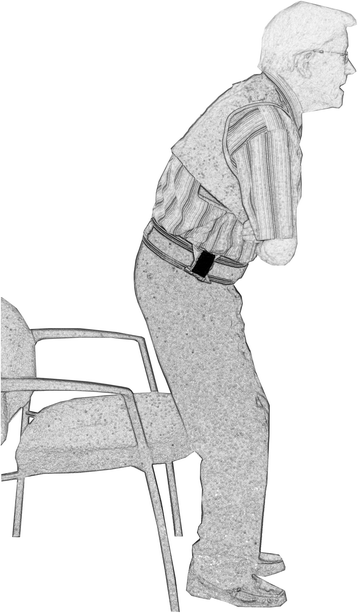The application of strength and power related field tests in older adults: criteria, current status and a future perspective
- PMID: 26865866
- PMCID: PMC4745147
- DOI: 10.1186/s11556-015-0147-6
The application of strength and power related field tests in older adults: criteria, current status and a future perspective
Abstract
Leg muscle strength (LMS) and leg muscle power (LMP) are determinants of aspects of functional status and important parameters for measuring intervention effects in older adults. Field tests are often used for the evaluation of LMS and LMP in older persons. However, criteria important for the application of strength and power related field tests in older adults have not been systematically taken into account and are not yet fully listed and described in a single publication. Therefore, this paper describes criteria important for the application of strength and power related field tests in older adults. In addition, strength and power related field tests commonly used in older adults are evaluated by using the described criteria. Based on this evaluation, this paper provides a perspective on the further development of field tests. Criteria important for strength and power related field tests are: adequate accuracy, precision, concurrent validity, clinical validity, practical feasibility and pure strength or power outcomes. Commonly used strength and power related field tests do not meet all the aforementioned criteria. Therefore, further development of field tests is necessary. Mobile sensing systems are potentially useful for the evaluation of LMS and LMP in older adults. Mobile sensing systems do not have the limitations of commonly used field tests and provide important additional advantages. In particular, mobile sensing systems offer the opportunity of continuous monitoring during free-movement in the home-environment, thereby reducing the need of standardized assessments by health-care professionals. Future studies should examine the clinical validity of mobile sensing systems and evaluate the application of sensor technology in exercise-based interventions.
Keywords: Aged; Assessment; Muscle power; Muscle strength; Sensor.
Figures


Similar articles
-
Sensitivity of sensor-based sit-to-stand peak power to the effects of training leg strength, leg power and balance in older adults.Gait Posture. 2014;39(1):303-7. doi: 10.1016/j.gaitpost.2013.07.122. Epub 2013 Aug 3. Gait Posture. 2014. PMID: 23973356
-
Developing a measure of muscular power during a functional task for older adults.BMC Geriatr. 2014 Dec 30;14:145. doi: 10.1186/1471-2318-14-145. BMC Geriatr. 2014. PMID: 25551186 Free PMC article.
-
Calf-raise senior: a new test for assessment of plantar flexor muscle strength in older adults: protocol, validity, and reliability.Clin Interv Aging. 2016 Nov 15;11:1661-1674. doi: 10.2147/CIA.S115304. eCollection 2016. Clin Interv Aging. 2016. PMID: 27895473 Free PMC article.
-
Performance-based clinical tests of balance and muscle strength used in young seniors: a systematic literature review.BMC Geriatr. 2019 Jan 9;19(1):9. doi: 10.1186/s12877-018-1011-0. BMC Geriatr. 2019. PMID: 30626340 Free PMC article.
-
Skeletal Muscle Power Measurement in Older People: A Systematic Review of Testing Protocols and Adverse Events.J Gerontol A Biol Sci Med Sci. 2018 Jun 14;73(7):914-924. doi: 10.1093/gerona/glx216. J Gerontol A Biol Sci Med Sci. 2018. PMID: 29309534
Cited by
-
Sit to stand muscle power reference values and their association with adverse events in Colombian older adults.Sci Rep. 2022 Jul 12;12(1):11820. doi: 10.1038/s41598-022-15757-8. Sci Rep. 2022. PMID: 35821249 Free PMC article.
-
Co-Creation with Older Adults to Improve User-Experience of a Smartphone Self-Test Application to Assess Balance Function.Int J Environ Res Public Health. 2020 May 26;17(11):3768. doi: 10.3390/ijerph17113768. Int J Environ Res Public Health. 2020. PMID: 32466484 Free PMC article.
-
Correlation analysis between lung ultrasound scores and pulmonary arterial systolic pressure in patients with acute heart failure admitted to the emergency intensive care unit.J Intensive Med. 2023 Oct 20;4(1):125-132. doi: 10.1016/j.jointm.2023.08.005. eCollection 2024 Jan. J Intensive Med. 2023. PMID: 38263970 Free PMC article.
References
Publication types
LinkOut - more resources
Full Text Sources
Other Literature Sources

